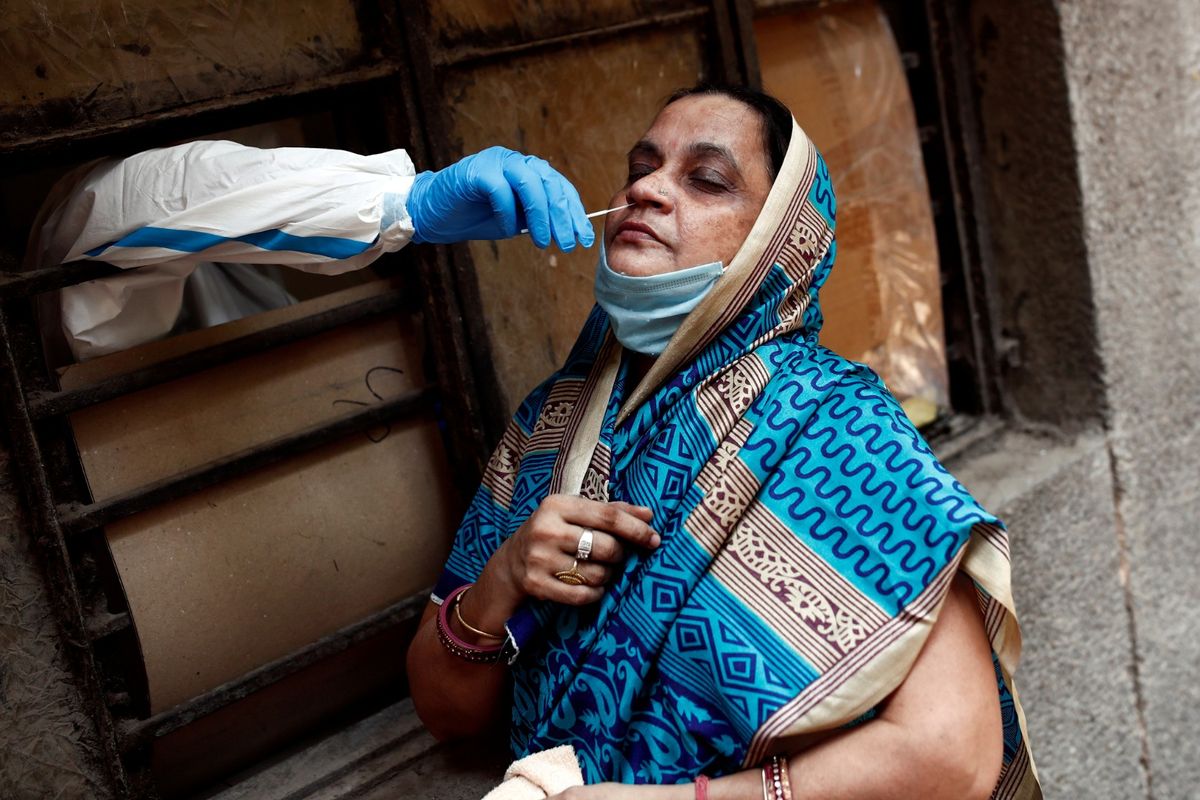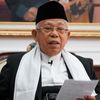The Struggle Continues as India’s Coronavirus Cases Surpass 1 Million

NEW DELHI, KOMPAS.com — India’s coronavirus cases hit the 1 million mark on Friday positioning in third place after the United States and Brazil for the world's highest number of Covid-19 cases.
Concerns are rising over the country’s readiness to face an inevitable surge that could overwhelm hospitals and its fragile healthcare system.
In the past 24 hours, India’s coronavirus cases added 34,956 new infections that round out the nationwide tally to 1,003,832.
India’s health ministry also reported 687 Covid-19 deaths thus totaling to 25,602 deaths nationally.
Read also: Covid-19 Cases in Indonesia Could Reach 120,000 by Independence Day: Jusuf Kalla
However, the health ministry pointed out that the country’s recovery rate is improving at 63 percent in which a total number of 635,757 people have recovered from the deadly virus.
The disheartening milestone came at a time when numerous Indian states have imposed focused lockdowns to stem the outbreak.
Local governments have also made frantic efforts to protect the economy.
Together, the Indian states of Maharashtra, Delhi, and Tamil Nadu have accounted for more than half of India’s coronavirus cases.
India’s vast countryside is following suit as the spread of the virus continues to grow in those areas.
Unfortunately, the healthcare system in India’s countryside is far less prepared and much weaker giving rise to added concerns over the country’s preparedness.
Read also: Indonesia’s Infected Medical Staff Did Not Work in Covid-19 Wards
“The acceleration in cases remains the main challenge for India in the coming days,” said Dr. Ashish Jha, director of the Harvard Global Health Institute, adding that a vast majority of cases were still being missed.
The continuing surge has forced authorities to reinstate lockdowns in some cities and states.
In Bangalore, a city that prides itself as the center of Indian technology innovation, the government ordered a weeklong lockdown that began Tuesday evening after the cases surged exponentially.
In Bihar, an eastern state with a population of 128 million and a fragile health system, a two-week lockdown was announced Thursday.
In Uttar Pradesh, the most populous state with more than 200 million people, authorities have started placing residents under strict weekend curfews, which will remain in place until the end of the month.
Other local governments are increasingly focusing on smaller lockdowns that shield the economy.
Nearly a dozen states have imposed restrictions on “containment zones” — areas that can be as small as a few houses or a street.
Dr. Anant Bhan, a global health researcher, said that India was likely to see “a series of peaks,” as the infection spread in rural areas.
Read also: Indonesian Economy Projected to Shrink 3.9 percent If Second Wave Hits
He pointed out that the capital of New Delhi and the financial capital, Mumbai, had already seen surges, while infections have now shifted to smaller cities.
India’s response to the virus was initially sluggish.
Then it bought time by locking down its entire population of 1.4 billion people when Prime Minister Narendra Modi imposed a nationwide lockdown for three weeks on March 24.
“If (the) situation is not handled in these 21 days, the country and your family could go back 21 years,” Modi said then in a televised address to Indians, many of whom were still unaware of the scale of the crisis in the country.
The nationwide lockdown, then extended for five more weeks, came at an enormous economic cost amid an unprecedented humanitarian crisis when millions of impoverished migrant workers were forced to return to the countryside due to job losses and hunger.
Aimed at increasing the capacity of the health care system, the lockdown slowed down the virus, but it wasn't enough.
Cases kept increasing while testing still remained abysmally low and the virus rocketed through India’s vast landscape — from high up in the Himalayan Kashmir to the sprawling beaches of Kanyakumari in Tamil Nadu.
Read also: Indonesia’s Former VP Jusuf Kalla: Don’t Expect Help during Coronavirus Pandemic
“Slowdown isn’t eradication,” said Jayaprakash Muliyil, an epidemiologist at the Christian Medical College in Vellore.
Muliyil said that India had to try and slow down the virus because it didn’t have enough beds but was only partly successful since the “requirement was quite large.”
India’s public health care system is one of the most chronically underfunded in the world and access to hospitals in rural areas is very low.
Experts say the challenge for India will be to tightrope the opening up of the economy while trying to restrict the increase in cases to manageable levels that don’t overwhelm hospitals.
“India’s strategy going forward will revolve around containment zones,” said Rajesh Bhushan of India’s federal health ministry. Once more zones are mapped out, health care workers will go from house to house and test those with symptoms, he said.
Experts say low testing remains a concern.
Dr. Ujjwal Parakh, a senior consultant at the department of respiratory medicine at Ganga Ram Hospital, New Delhi, said authorities could have been more transparent about testing guidelines.
Initially, India had some of the world’s most stringent testing criteria and used only about a third of its testing capacity.
After months of sluggishness, it has now ramped up testing, from a single lab in January to over 1,200. Over 300,000 samples are being tested every day.
In some cities, it has also allowed tests without a doctor’s prescription.
“The battle plan is to do all the things we know work. Open the economy, as much as it is safe. Track things very closely,” said Jha. "But don’t let the virus get a foothold.”
(Writer: Sheikh Saaliq, Aniruddga Ghosal)
Source: https://apnews.com/2dfde64b68cdcecfa45e16aeeeb88d0c
Simak breaking news dan berita pilihan kami langsung di ponselmu. Pilih saluran andalanmu akses berita Kompas.com WhatsApp Channel : https://www.whatsapp.com/channel/0029VaFPbedBPzjZrk13HO3D. Pastikan kamu sudah install aplikasi WhatsApp ya.

































